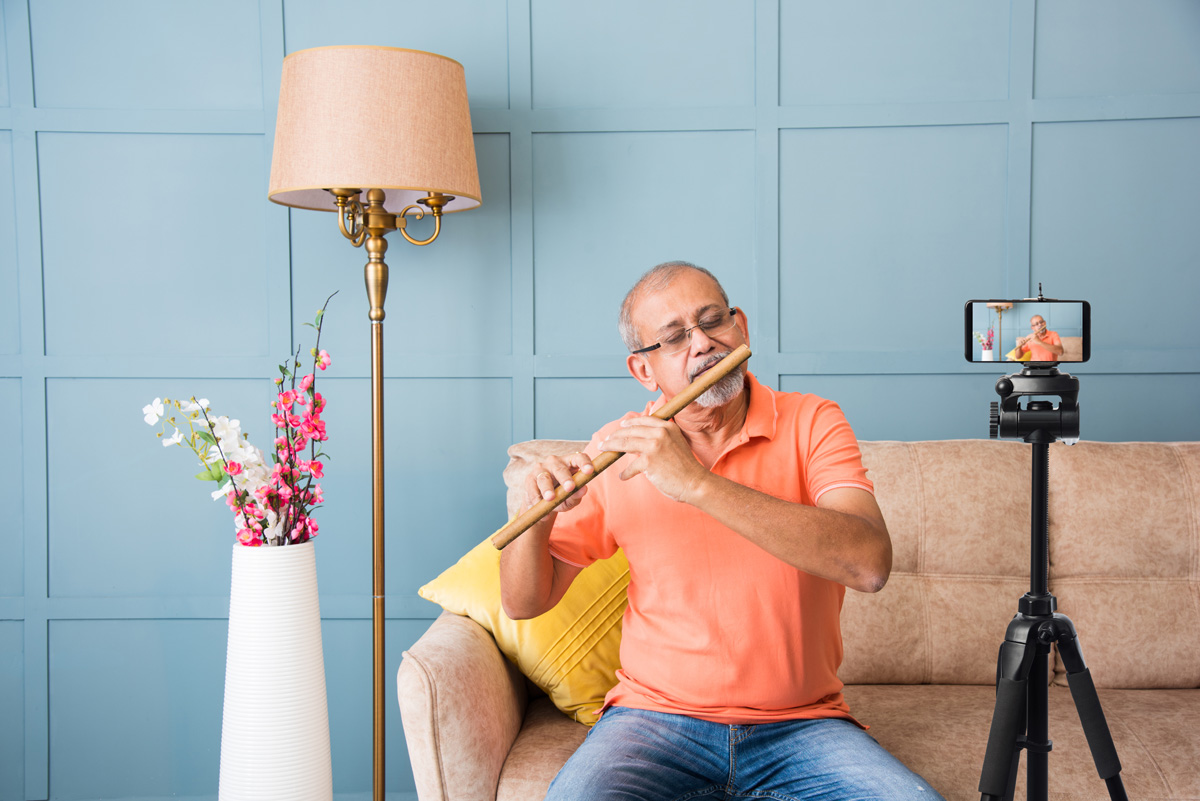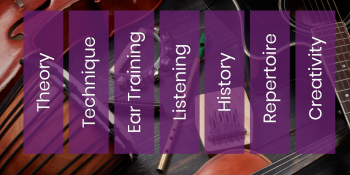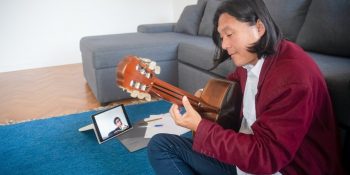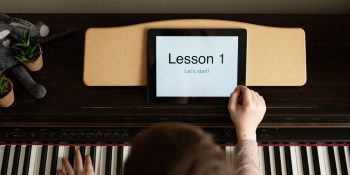
Setting Up Music Classes on Zoom
As we learn to live and adapt to the current challenging situation, we must get used to new ways of progress and accept the difficulties that come our way. Majority of us are working from home and connecting with others through online video platforms. For music teachers teaching online, it is not just the video platforms that they have to get used to, there are other technical challenges as well that they have to find solutions for. With streaming online comes challenges like getting the right audio input and output, camera angles to get the best view of the instrument and finding a way to best deliver your learning material. While these are the challenges faced by most music teachers, there are also individual challenges that come with different instruments. So let’s look at those challenges from each instrument point of view.
Electric Guitar : The biggest challenge with guitar is to get a clean audio signal output on the receiver’s end, especially with an electric guitar. To sort this out you will need to have an audio interface or a sound card device that will convert the sound of your guitar into a digital signal and back again. This will ensure that you don’t lose any information during transmission and avoid any latency in your audio signal.
Once you have the setup, you can allow zoom to read your audio interface as the input device by selecting it as its microphone and your student will hear every guitar input clearly. Now one of the challenges with this setup is that if you don’t have an external microphone, your student will not be able to hear you speak. To resolve this, you can use another device to log in to the platform which you can use as another camera angle for your class and use its microphone for communication with your teacher. Another way to solve this is to get an external microphone which can be connected to the audio interface and will send both the microphone signal and the guitar signal as the output to your students.
Acoustic Instruments : All acoustic instruments that usually don’t need an external source to provide its sound can be best captured in such video platforms through a condenser microphone. You can use the same setup as an electric guitar for the microphones by connecting it to the audio interface. In such setups, you can use this for your instrument as well as to communicate with your student. You can use this setup on an acoustic guitar, piano, violin, vocals, ukulele, wind instruments, etc.
Keyboard : All the modern keyboards can now be connected to your system (laptop, desktop) through a MIDI cable. A MIDI keyboard is quite useful as it can imitate a lot of sounds if you have a library of different sounds. With the availability of MIDI, you can also use softwares like MIDIculous which will create a map on a digital visual keyboard where it will let your student know which notes you are playing on the keyboard. To transmit this output to your students, all you have to do is to use the share screen option in which you will have to activate computer sound for the student to be able to hear your input on the MIDI keyboard. You can use an external microphone for better communication with your student.
Drums : Drums are the most challenging instrument, especially for acoustic kits as it has so many different parts which will require many microphones. You can send your audio input through a single microphone, but the best way to put out its input is to invest on an electronic drum kit. An electronic kit directly sends its input as a digital signal to your system which can be sent as the output audio for your student. In the beginning though, you can start giving exercises on the practice pads which does not require much of a technical setup. Also, one of the challenges for drums are the camera angles as well. You might need to set-up various frames for the student to access and understand the use of all the limbs on the instrument.
Camera Angles : Other than drums, every instrument at least needs two camera angles. One showing the complete instrument where they can be guided and if needed, they can record you for reference. And the other angle is a frame that includes you, it is essential to show yourself in the session as it breeds professionalism which your student will certainly appreciate. In the end, it is a learning session and the mood or the environment you set up in the session will certainly influence the way your student learns from you. So keep these two angles and provide the best experience to your students.
Please do note that these are the pointers to get the best output in terms of audio and video in your session. You might have noticed that to be able to achieve that, there is an investment required from your side but this shouldn’t be a hindrance from you taking classes online. You are probably already taking sessions online and found few hacks to provide your lessons and if it has worked with your student, you can stick with it, however it is always good to have an open mind about upgrading your set up whenever you can afford it. Remember, all these investments won’t just help make your sessions better but also grow you as a recording and producing artist/musician.



 Version
2.0
Version
2.0